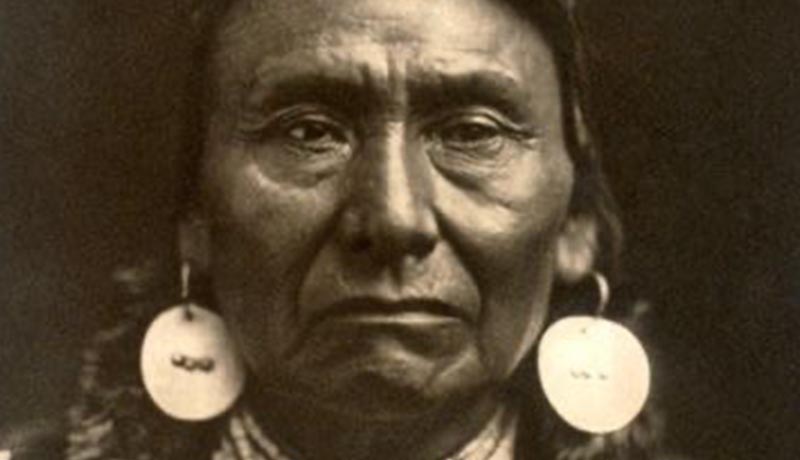Peta Nocona was an influential Comanche chief who led his band, the Noconies, in raids on the Texas frontier from the 1830s to his death in 1860. He was also the husband of Cynthia Ann Parker, a white captive who had been assimilated into the Comanche culture.
Peta Nocona was known for his physical stature, being described as an enormous man. He was a skilled warrior and political leader, respected by both his own people and those he fought against. His band was one of the most feared among the Comanches, and he played a significant role in shaping the tribe’s history during a time of conflict with white settlers.
The Noconies were part of the larger Comanche nation, which at its height controlled a vast territory stretching from present-day Colorado down to Mexico. They were known for their horsemanship and hunting skills, as well as their fierce resistance to encroaching white settlement. Peta Nocona and his band were no exception, and they carried out numerous raids on settlements and forts along the Texas frontier.
One of Peta Nocona’s most significant actions was his role in the abduction of Cynthia Ann Parker. She was taken captive along with her family during a Comanche raid in 1836, and she was eventually assimilated into the tribe. She later married Peta Nocona and had three children, the most famous of whom was Quanah Parker, who became the last official principal chief of the Comanches.
Peta Nocona’s leadership came to an end on December 18, 1860, when he was killed in a battle with Capt. Lawrence Sullivan Ross at the Pease River. His death marked the end of an era for the Comanches, as they were gradually pushed out of their traditional lands and forced onto reservations.
Peta Nocona was a complex figure in Comanche history, known for his leadership, military prowess, and role in shaping the tribe’s relationship with white settlers. His legacy lives on though his son, Chief Quanah Parker, and the Comanche people as a whole.
What Did Peta Nocona Do?
Peta Nocona was a Comanche chief who led a band called the Noconies in raids on the Texas frontier. He was the husband of Cynthia Ann Parker and the father of Chief Quanah Parker. Peta Nocona was known for his enormous physical size and was a prominent figure among the Comanche people. He led his band in raids on the Texas frontier from the 1830s until his death on December 18, 1860, at the Pease River. His death occurred during a battle with Capt. Lawrence Sullivan Ross, and he is remembered as a significant figure in Comanche history.

What Tribe Was Quanah Parker From?
Quanah Parker was from the Comanche tribe, which was a Native American tribe that lived in the Great Plains region of North America. The Comanche people were known for their horsemanship and their skilled hunting and warfare tactics. Quanah Parker, in particular, was a prominent warrior and political leader within the Comanche tribe, serving as the last official principal chief of the tribe. He was born to Peta Nocona, a Comanche chief, and Cynthia Ann Parker, a white captive of the Comanches.
Who Was Quanah Parker’s Father?
Quanah Parker’s father was Peta Nocona, who was the chief of the Kwahadi band of Comanche. Peta Nocona was known for his strong leadership and successful raids against other tribes and settlements. He was married to Cynthia Ann Parker, who was a young Anglo-American girl that had been taken captive by the Comanche tribe. Cynthia Ann Parker had assimilated into the Nokoni tribe, which was a band of the Comanche tribe. Quanah Parker was born into the Nokoni band and grew up among the Kwahadis, under the leadership of his father Peta Nocona.
Conclusion
Peta Nocona was a significant figure in Comanche history, known for his physical size and leadership of the Noconies band. He played a prominent role in Comanche raids on the Texas frontier during the 1830s to the 1860s. His son, Quanah Parker, became a famous Comanche leader and served as the last official principal chief of his tribe. Peta Nocona’s legacy lives on through his son and the stories of his bravery and leadership during a tumultuous time in Comanche and American history.
